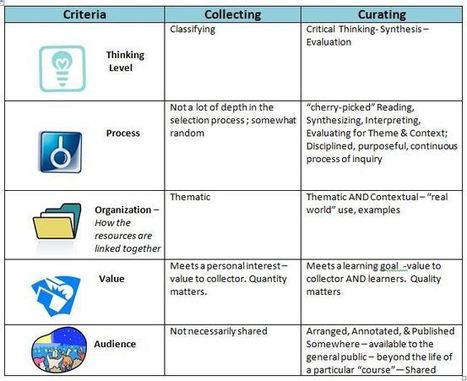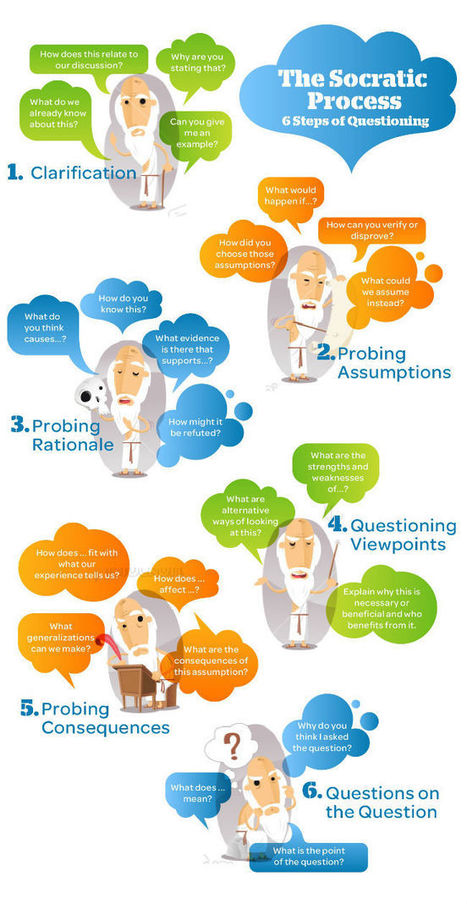I thought the author was another Nancy White who also does visual facilitation and works in the area of development. But it is another Nancy White who works on education.
I like how she relates curation to the Blooms Taxonomy (the triangle diagram in the article) and how curation is a higher level of thinking/learning - requires synthesis and evaluation, not just classifying.
Robin Good has more:
---------------
Robin Good: What does curation mean from an educational viewpoint? And what is the key difference between "collecting" and "curating".
Nancy White (@NancyW), a 21st Century Learning & Innovation Specialist and the author of Innovations in Education blog, has written an excellent article, dissecting the key characterizing traits of curation, as a valuable resource to create and share knowledge.
She truly distills some key traits of curation in a way that is clear and comprehensible to anyone.
She writes: "The first thing I realized is that in order to have value-added benefits to curating information, the collector needs to move beyond just classifying the objects under a certain theme to deeper thinking through a) synthesis and b) evaluation of the collected items.
How are they connected?"
Excellent definition.
And then she also frames perfectly the relevance of "context" for any meaningful curation project by writing: "I believe when we curate, organization moves beyond thematic to contextual – as we start to build knowledge and understanding with each new resource that we curate.
Themes have a common unifying element – but don’t necessarily explain the “why.”
Theme supports a central idea – Context allows the learner to determine why that idea (or in this case, resource) is important.
So, as collecting progresses into curating, context becomes essential to determine what to keep, and what to discard."
But there's a lot more insight distilled in this article as Nancy captures with elegance the difference between collecting for a personal interest and curating for a specific audience.
She finally steals my full endorsement for this article by discretely inquirying how great a value it would be to allow students to "curate" the domains of interest they need to master.
Excellent. Highly recommended. 9/10
Full article: http://d20innovation.d20blogs.org/2012/07/07/understanding-content-curation/
Via
Robin Good



 Your new post is loading...
Your new post is loading...















A very practical description with examples of ways to become better in your critical thinking. A good primer for sense making as part of the PKM framework.
"Navel gazing." I haven't heard that term in ages ... and don't do it near enough.
Critical thinking means to ask questions that need to be asked. it involves finding the significance in every piece of information you come across and formulating opinions and plans of action. You have to ask the tough questions and the best one to start with is "Why?" Critical thinking is about being curious and allowing your sense of curiosity to follow the "why".Often times following the why will lead to finding the truths and finding lies. Critical thinking is also about honing in ones BS detector. Take time to analyze information before accepting it's credibility.